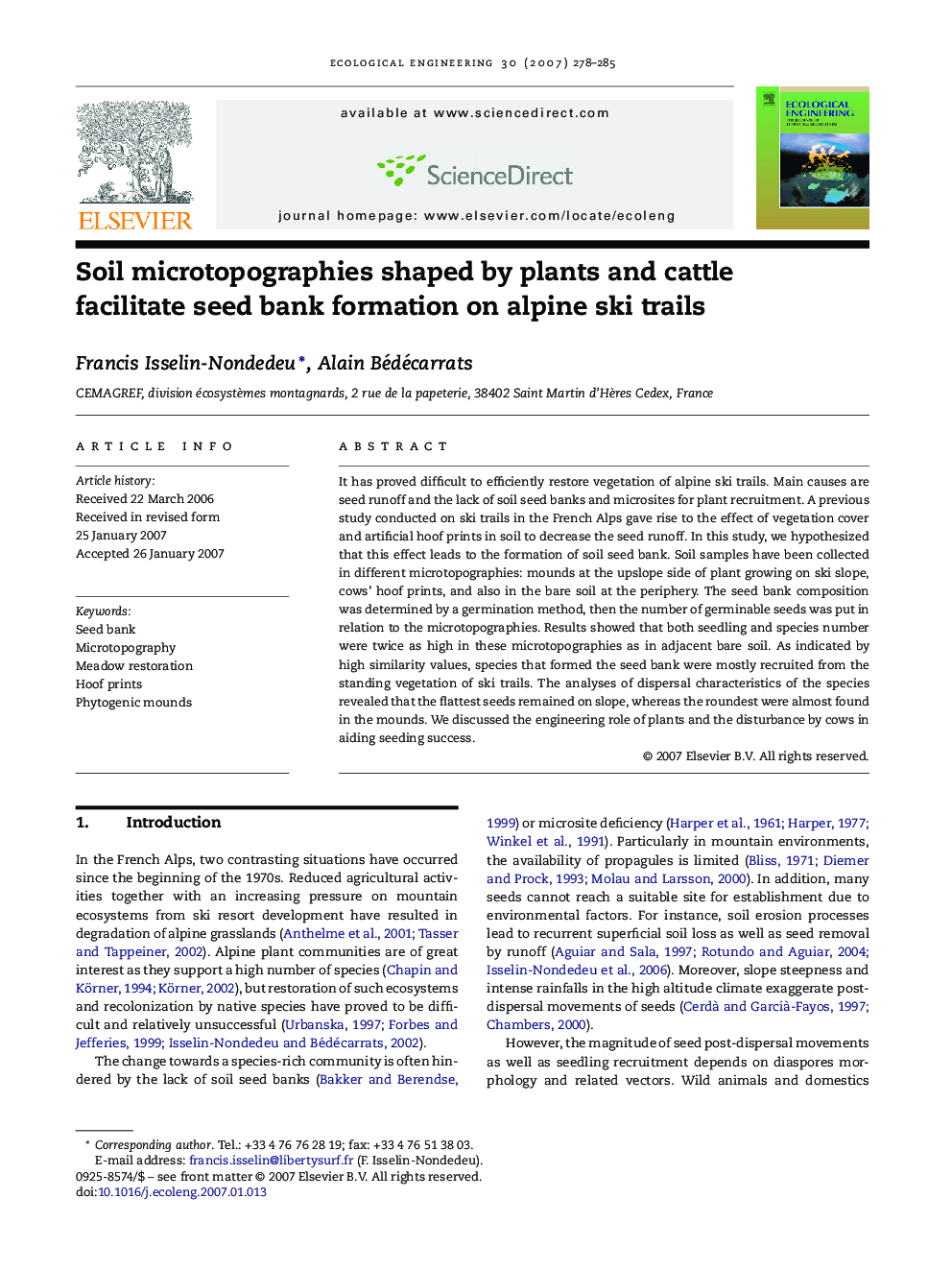| Article ID | Journal | Published Year | Pages | File Type |
|---|---|---|---|---|
| 4391098 | Ecological Engineering | 2007 | 8 Pages |
It has proved difficult to efficiently restore vegetation of alpine ski trails. Main causes are seed runoff and the lack of soil seed banks and microsites for plant recruitment. A previous study conducted on ski trails in the French Alps gave rise to the effect of vegetation cover and artificial hoof prints in soil to decrease the seed runoff. In this study, we hypothesized that this effect leads to the formation of soil seed bank. Soil samples have been collected in different microtopographies: mounds at the upslope side of plant growing on ski slope, cows’ hoof prints, and also in the bare soil at the periphery. The seed bank composition was determined by a germination method, then the number of germinable seeds was put in relation to the microtopographies. Results showed that both seedling and species number were twice as high in these microtopographies as in adjacent bare soil. As indicated by high similarity values, species that formed the seed bank were mostly recruited from the standing vegetation of ski trails. The analyses of dispersal characteristics of the species revealed that the flattest seeds remained on slope, whereas the roundest were almost found in the mounds. We discussed the engineering role of plants and the disturbance by cows in aiding seeding success.
